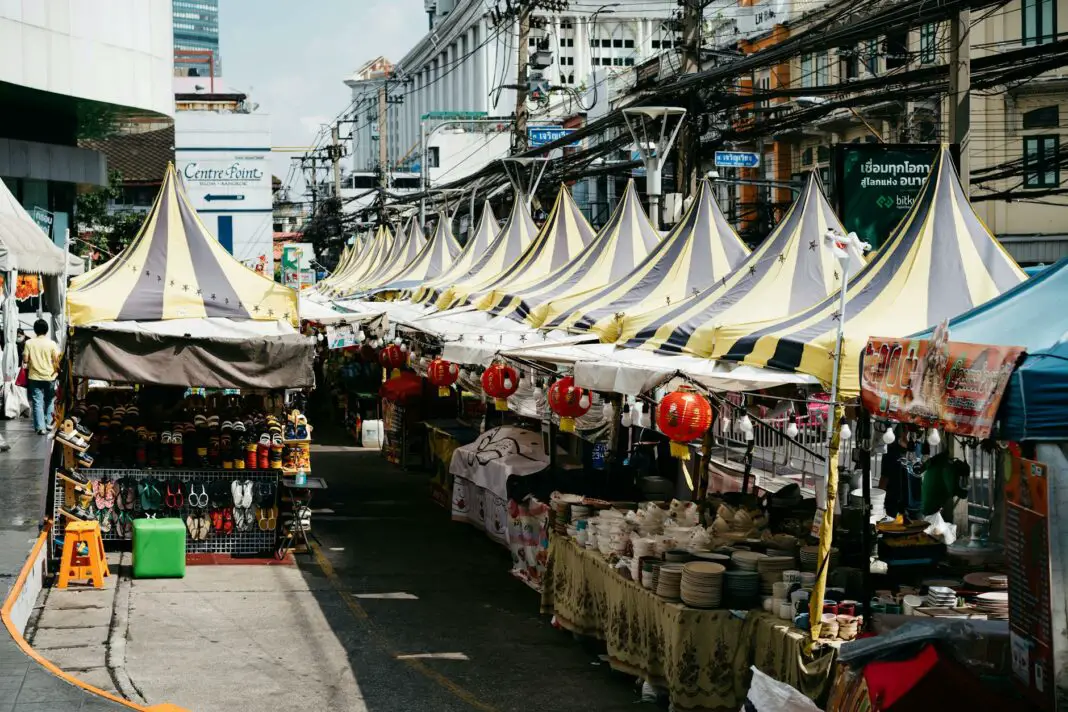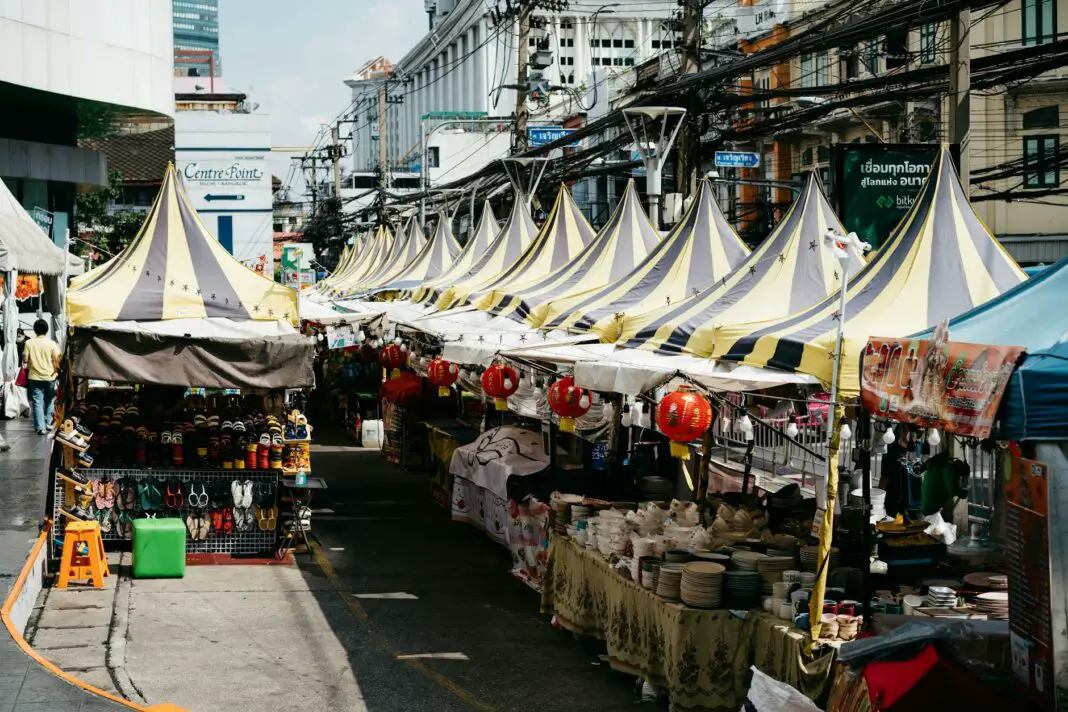Embarking on a trip to Thailand immerses travelers in a vibrant tapestry of culture, history, and art. However, one often overlooked aspect that can deepen this cultural dive is the stunning array of Thai dance costumes. Through the lens of traditional performances, these costumes do more than merely adorn the dancers; they encapsulate centuries of stories, beliefs, and artistry. Curious to discover how these garments weave into the fabric of cultural experience? This post will uncover how Thai dance costumes act as a gateway to a profound understanding of Thailand’s rich heritage.
This exploration is not just about the visual allure of Thai dance costumes; it’s about the narratives they tell. As travelers traverse the bustling streets of Bangkok or the serene landscapes of Chiang Mai, they find that witnessing a traditional dance performance unlocks emotional connections and cultural insights that guidebooks simply cannot convey. Join in as we delve into the captivating world of Thailand through its dance attire, revealing the elegance and significance behind each meticulously crafted piece.
Table of Contents
- The Cultural History Behind Thai Dance Costumes
- Symbols and Meanings of Costume Elements
- Experiencing the Performance: A Traveler’s Perspective
- Tips for Cultural Immersion Through Dance
- Insights and Personal Experiences
- A Journey Worth Remembering
The Cultural History Behind Thai Dance Costumes
Delving into the cultural history of Thai dance costumes reveals layers of significance that shaped their evolution over time. These garments date back centuries and are closely tied to the royal courts, where they were originally developed for court performances. In particular, they celebrated divine legends, historical narratives, and religious ceremonies. The intricate designs reflect the stories told through dance, merging textile artistry with theatrical performance in a way that showcases Thailand’s rich cultural heritage. Each costume is a testament to craftsmanship, often constructed from silk, which is a national pride. The elegance and fluidity of the fabric enhance the visual appeal, making dance performances breathtaking experiences.
Moreover, understanding the historical context elevates the importance of these costumes. During significant historical events, such as the establishment of the Chakri Dynasty in the 18th century, costume styles evolved, symbolizing changes in society and culture while also maintaining traditional elements. The costumes embodied the overlay of local beliefs and imported ideas, showcasing a uniquely Thai identity forged through centuries of artistic development and social evolution. Witnessing this history come to life during a performance can be a transformative experience, deeply enriching travelers’ understanding of Thai culture.
Symbols and Meanings of Costume Elements
Every element of a Thai dance costume carries profound meanings. From colors to accessories, each component tells an essential story woven into the performance. For example, the use of gold and vivid colors symbolizes prosperity and auspiciousness, while delicate patterns often draw inspiration from nature, representing the harmony between humanity and the environment. The intricate headpieces, often made with silver or gold, signify nobility and purity, marking the feature of the dance’s character, whether it is a celestial being, a mythical creature, or a historical figure. Understanding these symbolic elements makes the performance more than just an aesthetic spectacle—it becomes an exploration of cultural values and beliefs.
Furthermore, certain gestures and postures during the performance complement the costume’s symbolism, creating a cohesive narrative that reflects the ethos of Thai art and spirituality. For instance, the graceful hand movements, called “Mudras,” convey emotions and serve as a form of communication with deities. Observing how these components interact offers a holistic view of Thai culture—intertwining art, dance, and spiritual expression that enriches any traveler’s experience in Thailand.
Experiencing the Performance: A Traveler’s Perspective
Experiencing a traditional Thai dance performance allows travelers to engage in an immersive cultural experience. Such performances often take place in beautiful temples or dedicated theaters, enhancing the atmosphere and authenticity of the experience. Upon entering, visitors are immediately captivated by the vibrant décor, filled with hues of gold and red, that captures the essence of Thai artistry. As the music begins, the energy shifts, creating an environment of anticipation and excitement that envelops the audience.
The dancers, adorned in their spectacular costumes, draw everyone into a world where stories from ancient texts and folklore come to life. One can almost feel the stories as they unfold, thanks to the emotive expressions of the dancers and the musical accompaniment that resonates deeply with the audience. Being present at one of these performances is not just about watching—it’s about connecting with Thailand’s soul, creating memories that last a lifetime. For travelers, this experience is a dazzling insight into the heart of Thai culture that is both entertaining and enlightening.
Tips for Cultural Immersion Through Dance
If you’re aiming for a fuller cultural immersion during your trip to Thailand, seek out opportunities to experience traditional dance performances firsthand. Look for local festivals which often feature these dances, showcasing a wide range of styles and rituals that highlight regional differences. Additionally, consider joining workshops where you can learn the basics of Thai dance movements and the significance behind them. Participating in these activities provides insight into the art form and fosters a deeper appreciation for the cultural narratives they portray.
As you explore, don’t hesitate to engage with locals and ask questions about the dances and costumes. Whether you’re enjoying performances in public spaces or at cultural centers, these interactions lead to enlightening discussions and can unveil rich stories about heritage and artistry that you might otherwise overlook. Taking photographs is a great way to preserve your memories, but be mindful of not interrupting the flow of performance. Remember that every detail of the dance is intentional, and observing quietly allows you to absorb the performance completely.
Insights and Personal Experiences
Throughout my travels in Thailand, the moments spent in the audience of traditional dance performances stand out prominently in my memory. Witnessing the exquisite costumes only deepened my understanding of the artistry involved. I remember attending a performance in Chiang Mai, where the costumes unfurled perfectly with each movement of the dancers, shimmering with every step. The dancers not only embodied their characters through careful movements but radiated their cultural pride through each stitch in their elaborate dresses.
As the evening went on, the music surged, transporting the entire audience into a world rich with culture and history. Moving forward after the performance, I found local artisans practicing their craft, expertly weaving fabrics and sewing intricate designs for their costumes. Interacting with them offered me a window into the painstaking work that goes into creating these garments, imparting a newfound respect for the worn fabric of history that envelops the culture in a vibrant embrace. It was an eye-opening experience that emphasized the importance of preserving traditional arts while fostering cultural dialogue and appreciation.
Capturing the Essence of Thailand Through Dance Costumes
As this journey through the world of Thai dance and its stunning costumes concludes, the essence of cultural immersion becomes strikingly clear. Each element, from the intricate designs to the movements captured within the dance, forms an inviting gateway into Thailand’s rich tapestry of stories. To truly appreciate this culture, travelers should seek encounters that extend beyond the surface. Engaging, learning, and experiencing through dance can create lasting memories while enriching one’s understanding of the country’s heritage.
Frequently Asked Questions
What should I wear to a Thai dance performance?
It’s recommended to dress modestly and respectfully. Lightweight clothing is best for the often humid conditions, but avoid shorts and tank tops. Consider wearing long pants and a shirt with sleeves.
Are Thai dance performances suitable for children?
Yes, many performances are family-friendly and can be a great way to introduce children to Thai culture. However, ensure to check the content of the performance beforehand.
How can I find authentic cultural performances?
Look for local cultural centers, temples, or festivals that promote traditional arts, as they often host authentic performances. Online research and word-of-mouth recommendations can also guide you to experiences that honor tradition.
Image Credit: Pexels





